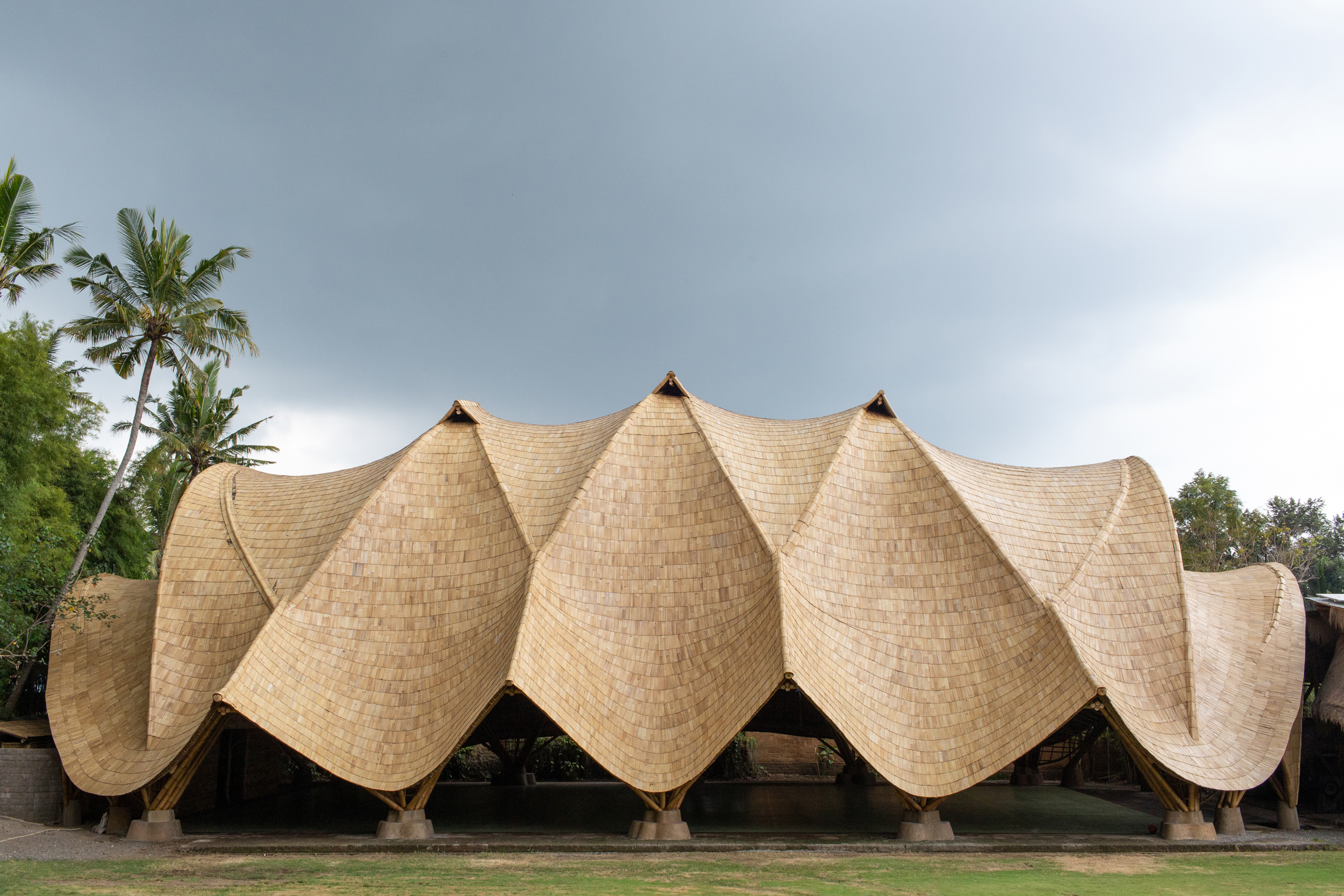Building with bamboo: In Bali, designer, Elora Hardy, shares her tips and experience
Bamboo architecture can be powerful and sustainable; here, we talk to Ibuku's Elora Hardy, who shares her tips, thoughts and experience in working with the material in Bali
Bamboo architecture has been gaining momentum. The natural material is powerful and versatile – durable in various climatic conditions and featuring high tensile and compressive strength – and a fantastic tool for crafting sustainable architecture. It is a resource that grows quickly naturally, meaning it can be renewed easily, with minimum effort and energy consumption. At the same time, its bendy nature and malleable fabric can produce truly eye-catching designs with numerous applications.
Ibuku, headed by founder and creative director Elora Hardy, is a pioneer and global proponent of bamboo architecture. The Bali-based studio, a team of designers and architects, is dedicated to exploring innovation in its field, working with natural materials, of which bamboo is central, to build a variety of typologies – from homes to hotels, schools, and event spaces. We caught up with Hardy, who shared her tips and experience in working with the valuable natural material.
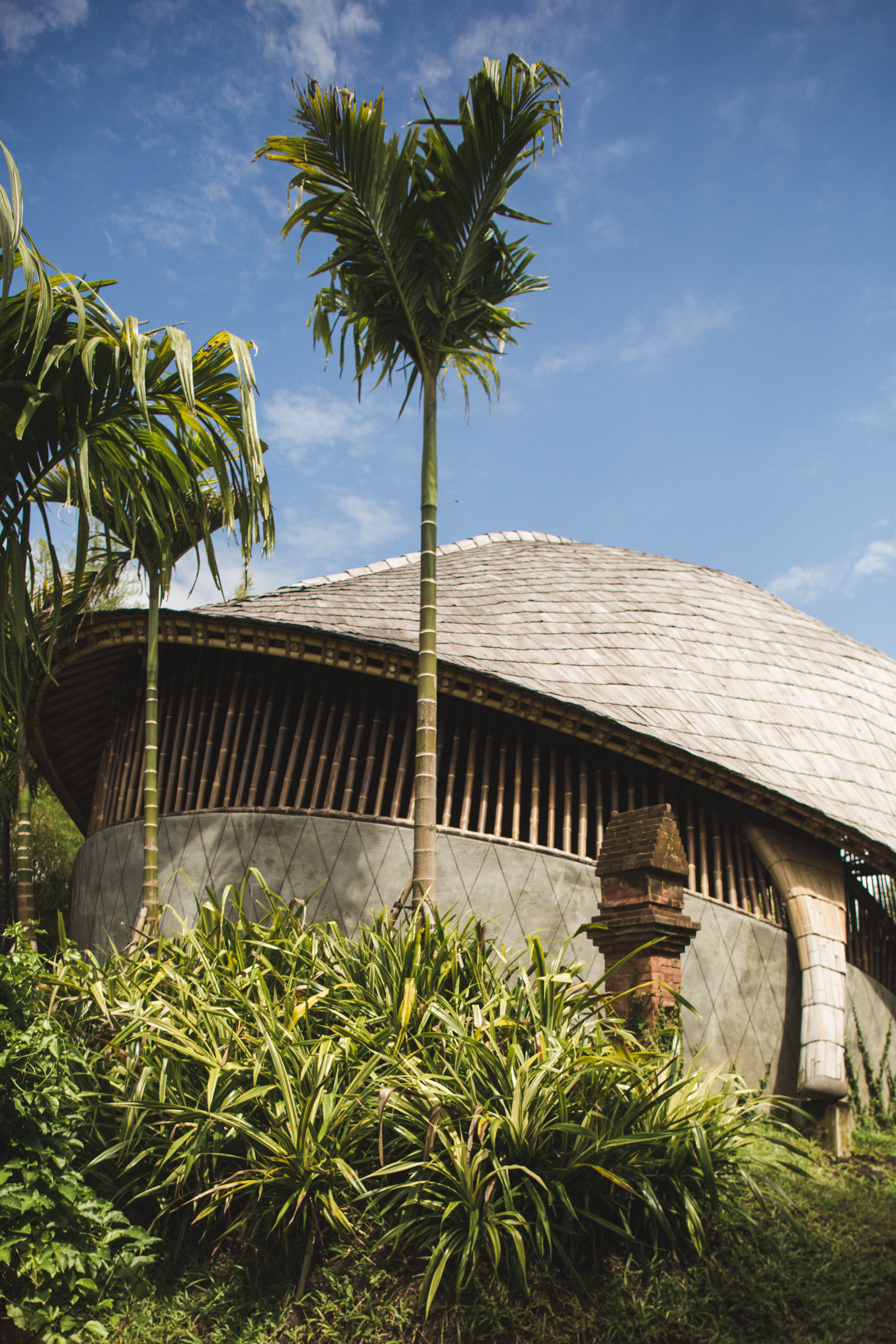
Studio Jencquel and Ibuku's Kura Kura badminton court in Bali
Explore bamboo architecture with Elora Hardy and Ibuku
Hardy recalls what attracted her to start working with the material: 'I was searching for a way to feel responsible as a designer and as a human, wondering how to choose materials with good impact and significance. Working in fashion [outside of Bali, where Hardy grew up] I became aware of the waste and toxicity built into our systems. In parallel, my father began designing buildings from bamboo in Bali. I realised that what I wanted to be part of was already happening within my own family, so I came home.'

Elora Hardy, founder and creative director of Ibuku in Bali
'The more I get to know bamboo, [the more] I aspire to be like it – unique while growing alongside other individuals, [using] flexibility as a strategy to avoid breaking under pressure. In its original form as a pole, bamboo has beauty, strength and personality that shouldn't be over-designed; we must restrain our design instinct to control and shape it. And when turned into slats, it can dance with us, by being bent and curved into the forms of our imagination.'
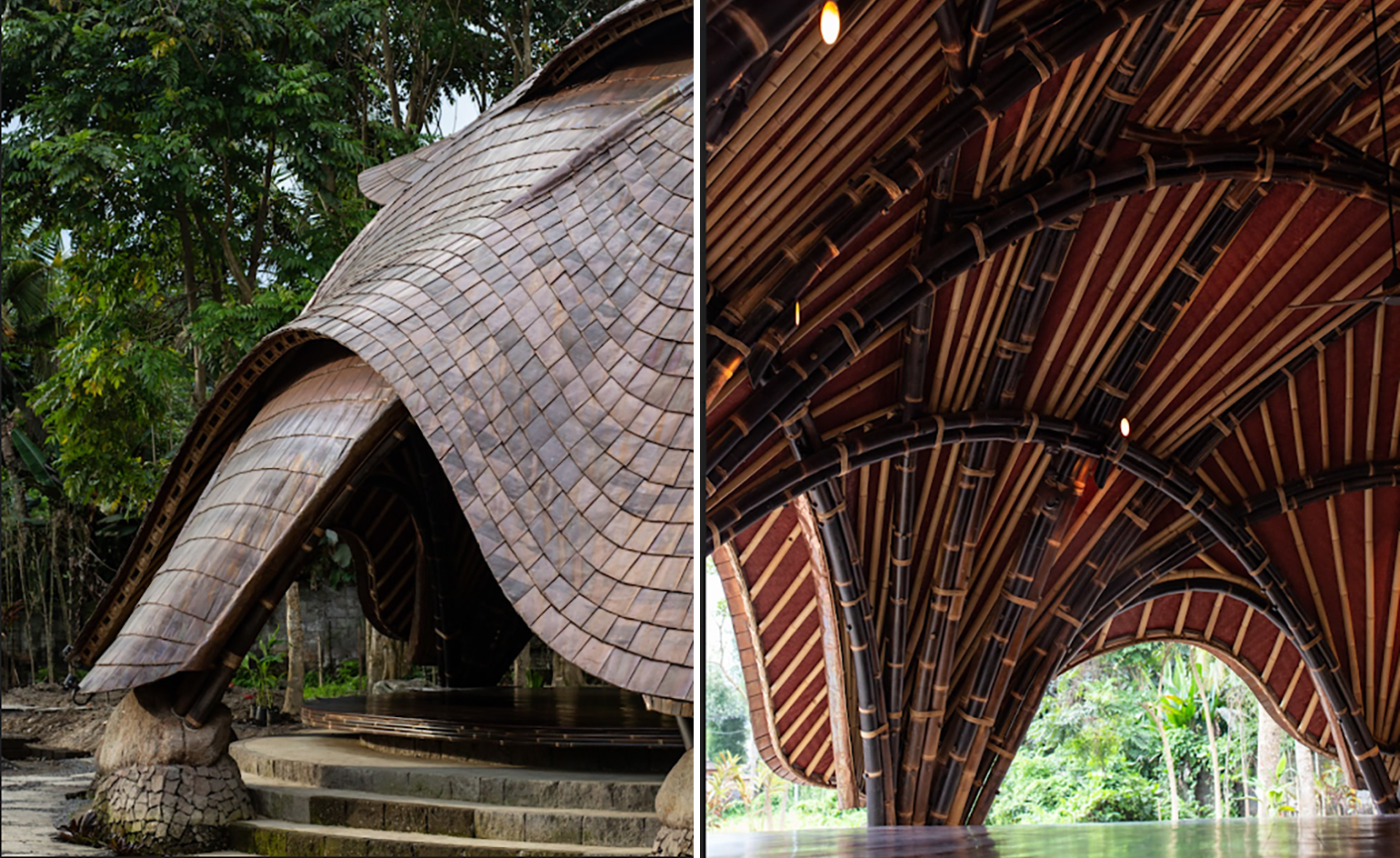
Ibuku's carefully engineered Alchemy Yoga and Meditation Center in Indonesia
Bamboo architecture benefits
There are several key benefits to working with the material, Hardy highlights: 'Abundance. Teaches flexibility. Brings personality, while being flexible.' It is a component that keeps surprising her, she admits, through its complexity and the way it challenges her and her team. 'I continue to realise how little I know and how much is possible,' she adds.
Ibuku architect Rita Santoso says: 'With bamboo and its natural colours and textures, it's like learning a new design language, with much more opportunities to reach new different levels of comfort while being close and connected to the luxurious nature.'

Studio Jencquel and Ibuku's Kura Kura badminton court in Bali, interior
5 key properties of bamboo
- A renewable resource
'It grows fast and is strong and beautiful. Bamboo is also an incredible resource for design. It has unique material properties which are an amazing resource not found in other materials. Though building with bamboo is not new, engineers, architects and designers like us are able to invest time and care in creating a new design vocabulary with bamboo because natural treatment methods have turned bamboo into a credible, long-lasting building material. The bespoke artisanal structures we create in Bali are creating a ripple effect of attention towards the possibilities of bamboo and have inspired innovations in other underutilised natural materials. Combining craftsmanship with technology is the recipe for a magical future.' - A local material
'For our projects, we usually use what is locally available, and we innovate systems and techniques by connecting engineering expertise with craftsmanship, to reinvent what is possible and practical for each place.' - Durability
'A bamboo pole has the potential to last hundreds of years within a structure. In nature, it lives for only around ten years. When a pole dies in nature, the carbon it has sequestered is released back into the eco-system. So there's something magical about this afterlife, where a pole’s contribution, participation, and even carbon sequestration can live on.' - Versatility
'I’m curious about how the thinking that bamboo has inspired in us can next be translated to be applicable outside of the jungle, beyond this one material, outside of the tropics. I see that what we have been doing, and how we have been thinking, can impact what people choose to use and make. I see this happening when I teach at Bamboo U [eco-architecture courses in Bali], where people think they are coming to learn about bamboo and leaving with so much more. I hope that it has a big, subtle ripple effect.' - It's full of character
'Bamboo is full of character, integrity, and individuality, far beyond being a simple wood replacement. From what was so long considered a humble material, we have extended bamboo’s range. From the essential to the precious, it's becoming a part of daily life for people around the world.'
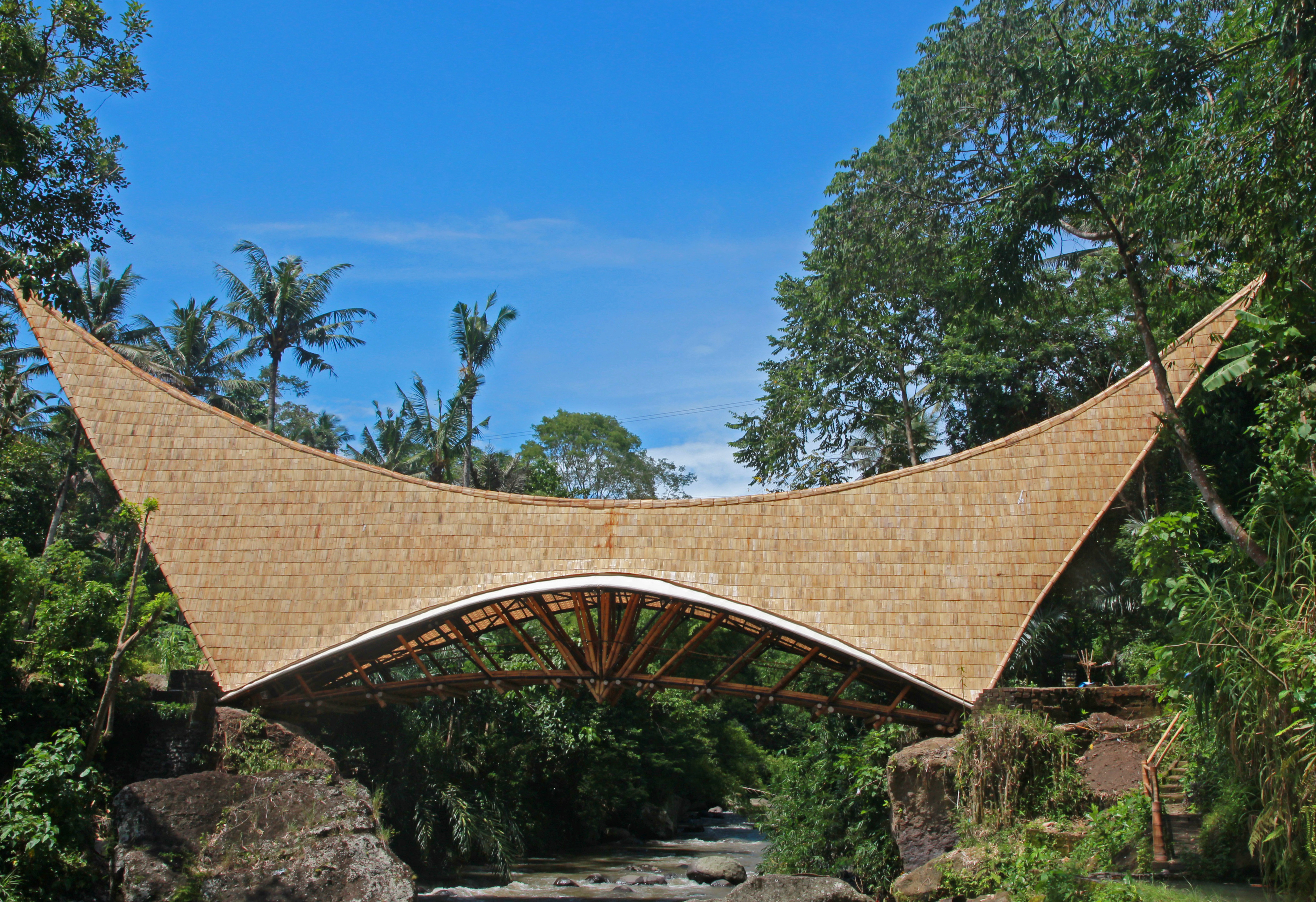
Bamboo 'Millennium Bridge' at Green School in Bali
6 tips for building with bamboo by Elora Hardy
- We have to change the core of our identities to work with bamboo, it contradicts much of what tends to be cultivated in the education and profession of architecture. Listen for natural intuition – bamboo works the way nature works, not the way you were trained to think.
- We must be flexible, and tolerant of imprecision – these aren't 2x4s, each [pole is] a unique piece of nature; we must indicate ranges of tolerance, not just set requirements for each measurement, at each point.
- Hike, don't try to drive. This is a new frontier, it's not all figured out, and the road is not paved. Notice what reality is, and be ready to reroute along the way; you'll likely end up encountering a more beautiful view.
- Be cooperative, and collaborative – by listening to and learning from the craftsmen and builders.
- Look out for our egos – we must make room for the material's personality.
- Don't dream alone – align yourself with the strengths and vulnerabilities of each material and personality in the team; all are outliers.

Sumba Hospitality Foundation by Ibuku
Bamboo architecture of note
Surajkund Craft’s Northeast Pavilion by atArchitecture, India
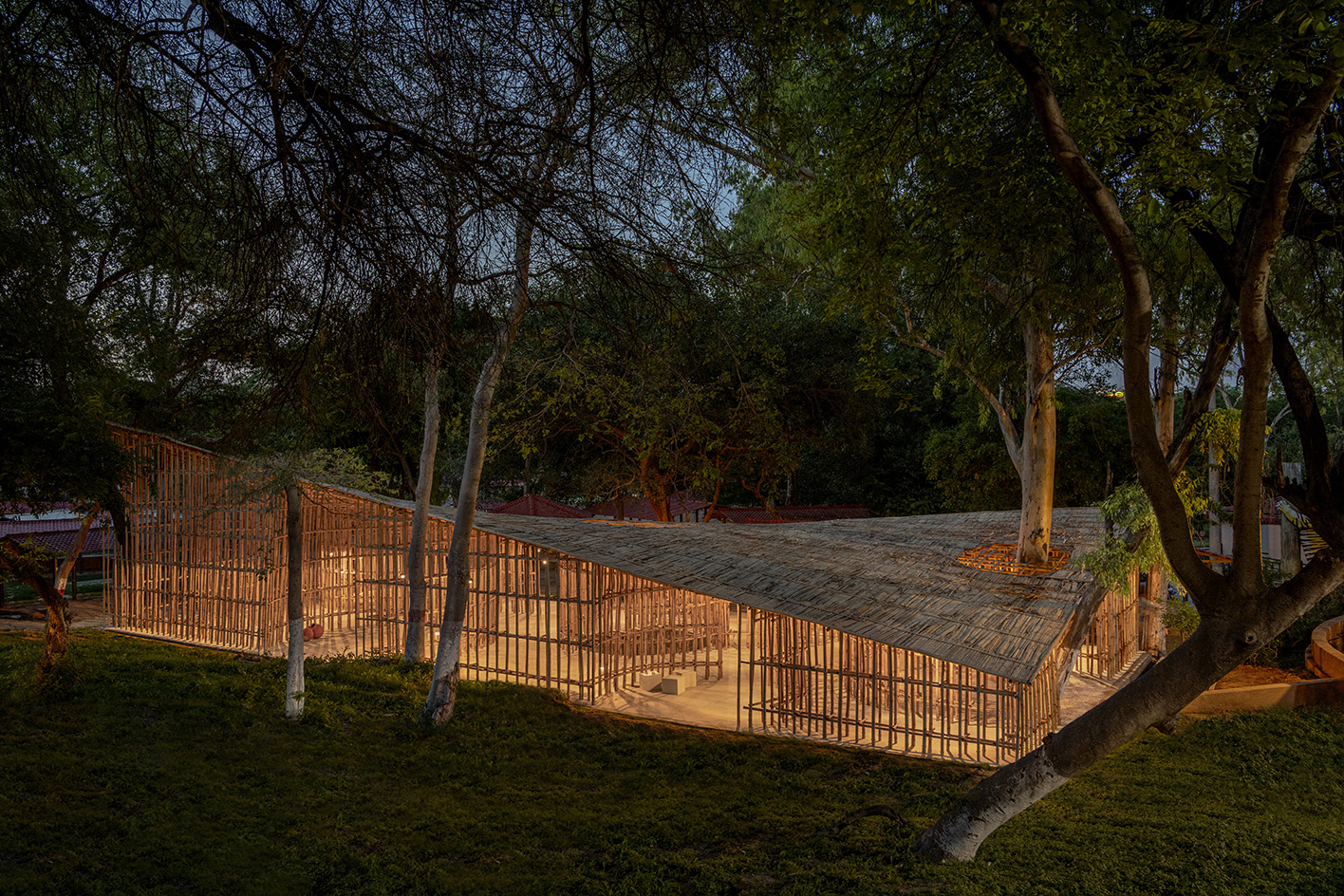
Commissioned for the 2023 Surajkund Craft Fair, the Northeast Pavilion is a striking bamboo cloud of a structure and the brainchild of Mumbai-based architecture studio atArchitecture, and its co-founders Neha Rane and Avneesh Tiwari. It is also the emerging studio’s very first completed, permanent building in India. The structure was conceived to celebrate the tradition of local bamboo construction in line with the festival’s overall focus – the annual fair promotes Indian handicrafts, providing a platform to artisans on its site in Faridabad near the historic human-made Surajkund Lake, which was commissioned by King Suraj Pal of the Tomar dynasty in the 10th century
Wallpaper* Newsletter
Receive our daily digest of inspiration, escapism and design stories from around the world direct to your inbox.
Kempegowda International Airport by SOM, in collaboration with Enter Projects Asia, India
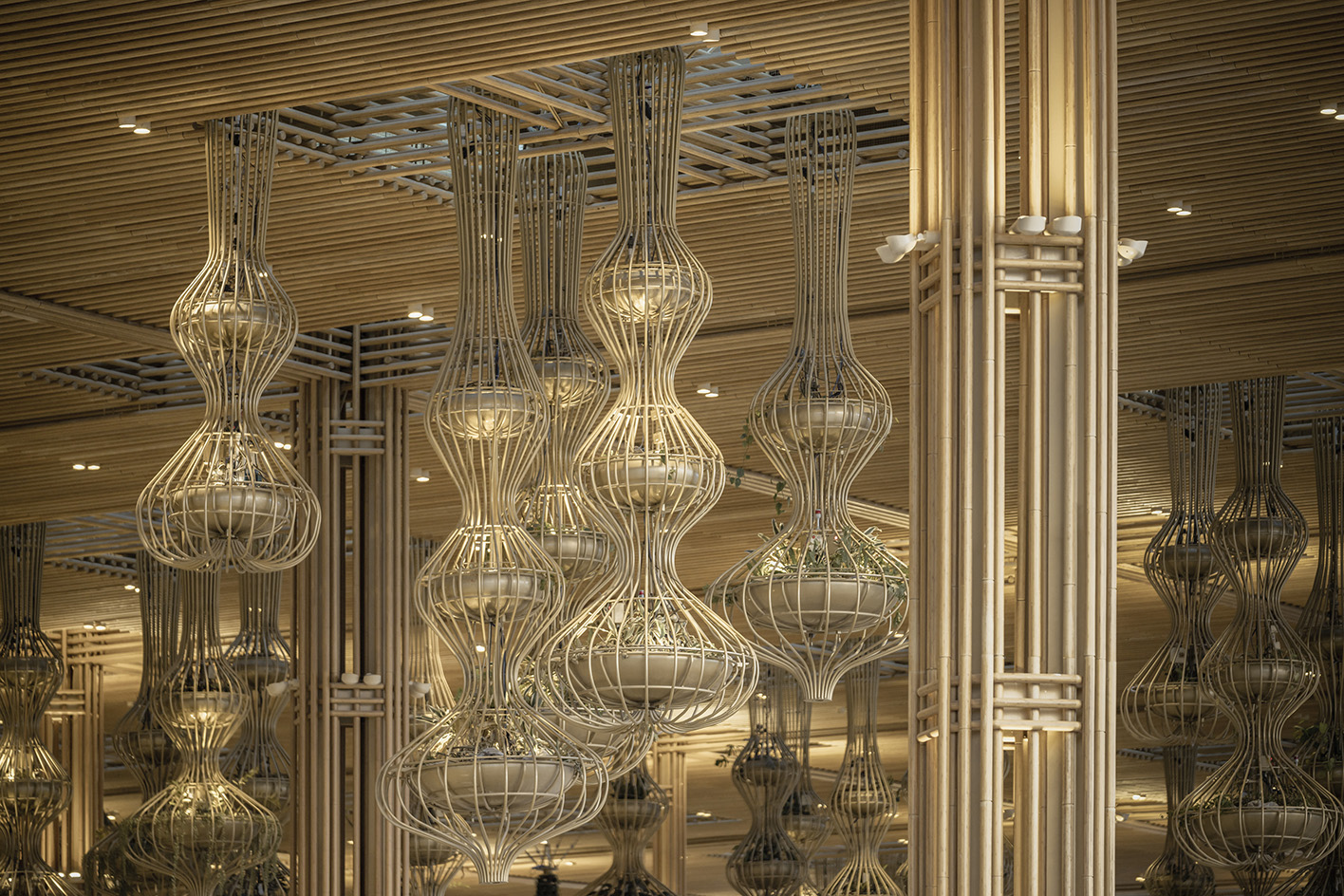
Kempegowda International Airport unveiled its Terminal 2 structure in 2023, a pioneering bamboo design by architecture studio SOM in collaboration with Enter Projects Asia, which created the interiors. Located in Bengaluru (BLR Airport), southern India, this significant piece of transport infrastructure services one of the country's largest cities – as well as its wider region. Aiming to create a facility that not only can handle the 25 million new visitors expected, but that is also rooted in nature and sustainable architecture, the new terminal is rich in interior planting, lush exterior gardens (its landscaped spaces designed in collaboration with Grant Associates and Abu Jani/Sandeep Khosla), and natural materials such as brick and bamboo. It is all conceived to uphold Bengaluru's reputation as the 'garden city'.
Bijoy Jain’s bamboo Mpavilion, Australia
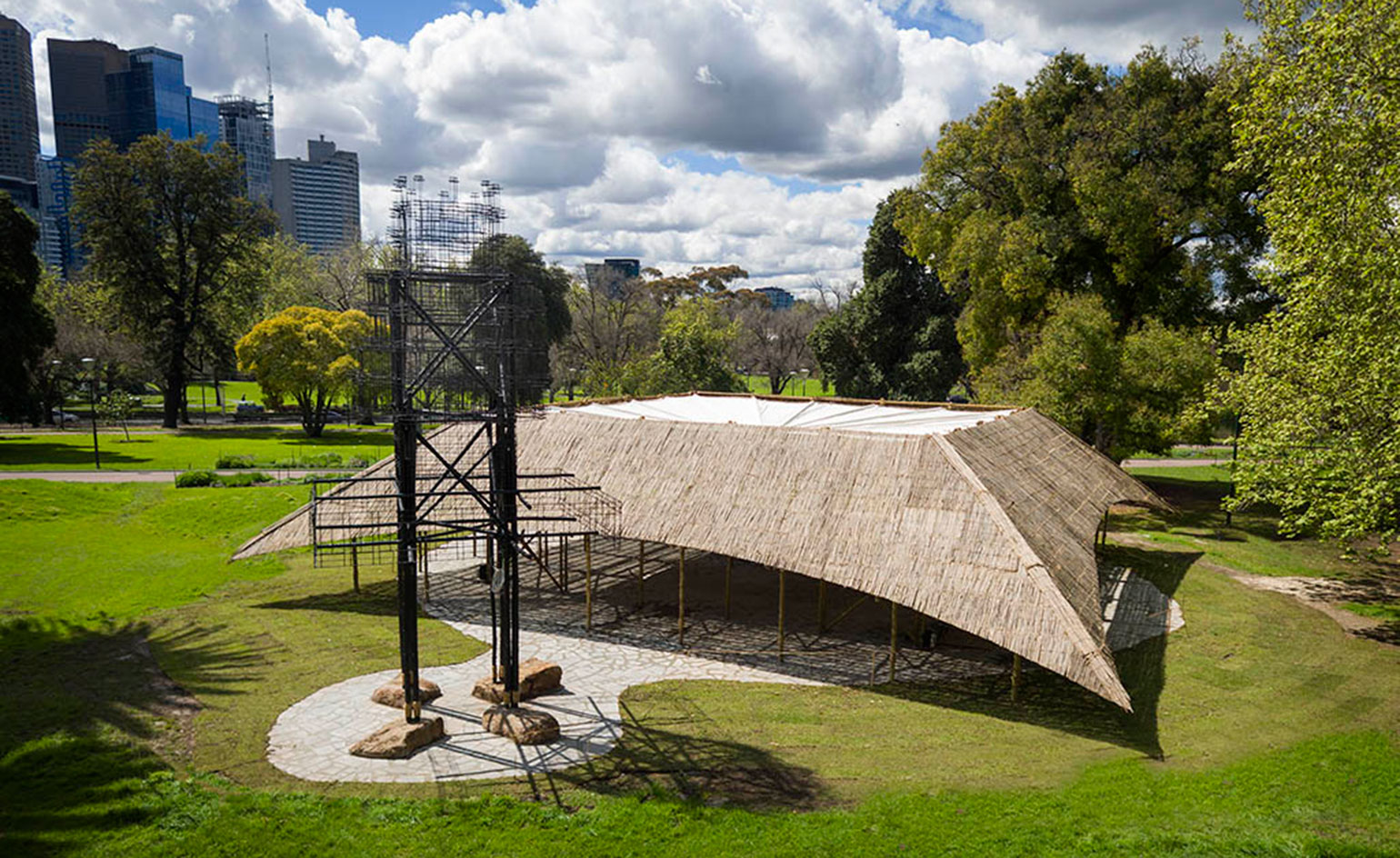
From Sean Godsell’s openable box of surprises to Amanda Levete’s ethereal tree-inspired canopy, the MPavilion has steadily established itself as a key staple on Melbourne's architecture agenda, marking the start of the Australian summer. For the installation’s third edition in 2016, MPavilion founder Naomi Milgrom invited celebrated Indian architect Bijoy Jain to design his own version of the Queen Victoria Gardens folly. Heading acclaimed architecture practice Studio Mumbai, Jain has a strong following and solid reputation for top craftsmanship, elegant designs and collaborative work. His firm creates works of all scales from its western Indian base, where they employ artisans, specialist craftspeople, as well as architects and designers to bring a rounded, craft-based approach to their commissions.
Ellie Stathaki is the Architecture & Environment Director at Wallpaper*. She trained as an architect at the Aristotle University of Thessaloniki in Greece and studied architectural history at the Bartlett in London. Now an established journalist, she has been a member of the Wallpaper* team since 2006, visiting buildings across the globe and interviewing leading architects such as Tadao Ando and Rem Koolhaas. Ellie has also taken part in judging panels, moderated events, curated shows and contributed in books, such as The Contemporary House (Thames & Hudson, 2018), Glenn Sestig Architecture Diary (2020) and House London (2022).
-
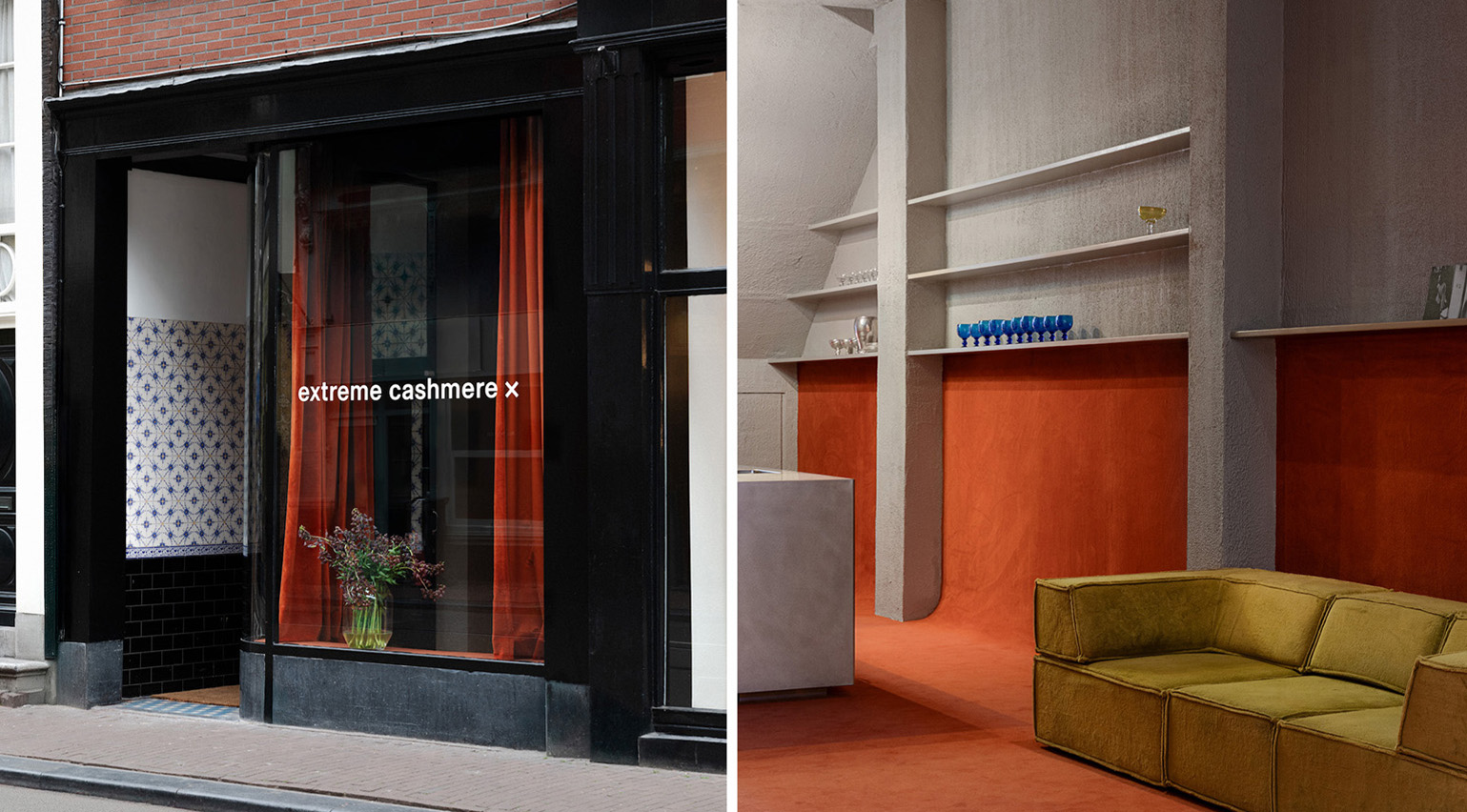 Extreme Cashmere reimagines retail with its new Amsterdam store: ‘You want to take your shoes off and stay’
Extreme Cashmere reimagines retail with its new Amsterdam store: ‘You want to take your shoes off and stay’Wallpaper* takes a tour of Extreme Cashmere’s new Amsterdam store, a space which reflects the label’s famed hospitality and unconventional approach to knitwear
By Jack Moss
-
 Titanium watches are strong, light and enduring: here are some of the best
Titanium watches are strong, light and enduring: here are some of the bestBrands including Bremont, Christopher Ward and Grand Seiko are exploring the possibilities of titanium watches
By Chris Hall
-
 Warp Records announces its first event in over a decade at the Barbican
Warp Records announces its first event in over a decade at the Barbican‘A Warp Happening,' landing 14 June, is guaranteed to be an epic day out
By Tianna Williams
-
 Tour Nuanu Creative City, a new Bali district informed by art, nature and technology
Tour Nuanu Creative City, a new Bali district informed by art, nature and technologyWelcome to Nuanu Creative City: Bali’s unprecedented 44-hectare creative development is taking shape
By Joanna Kawecki
-
 ‘I wanted to create a sanctuary’ – discover a nature-conscious take on Balinese architecture
‘I wanted to create a sanctuary’ – discover a nature-conscious take on Balinese architectureUmah Tsuki by Colvin Haven is an idyllic Balinese family home rooted in the island's crafts culture
By Natasha Levy
-
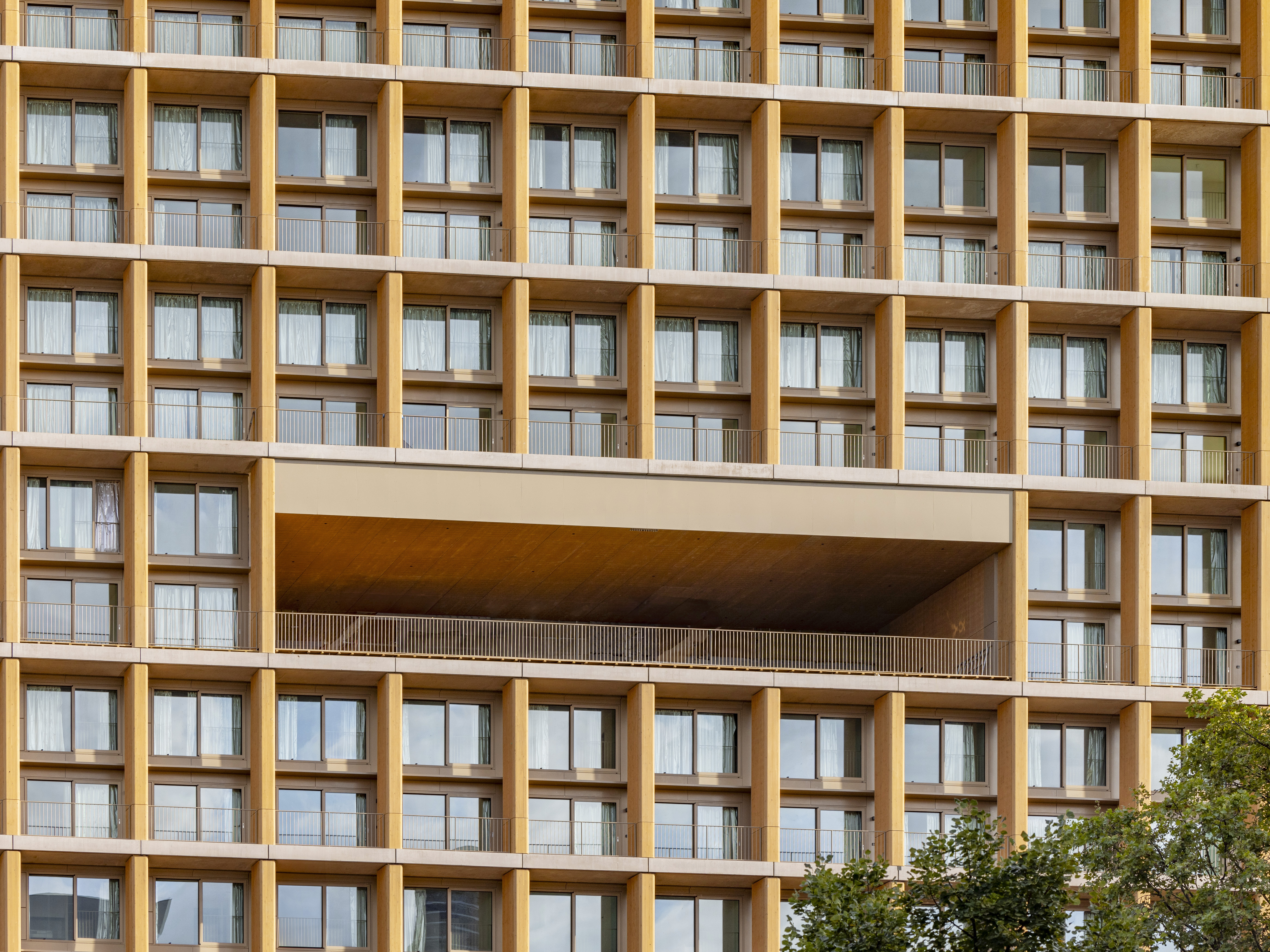 Explore wood architecture, Paris' new timber tower and how to make sustainable construction look ‘iconic’
Explore wood architecture, Paris' new timber tower and how to make sustainable construction look ‘iconic’A new timber tower brings wood architecture into sharp focus in Paris and highlights ways to craft buildings that are both sustainable and look great: we spoke to project architects LAN, and explore the genre through further examples
By Amy Serafin
-
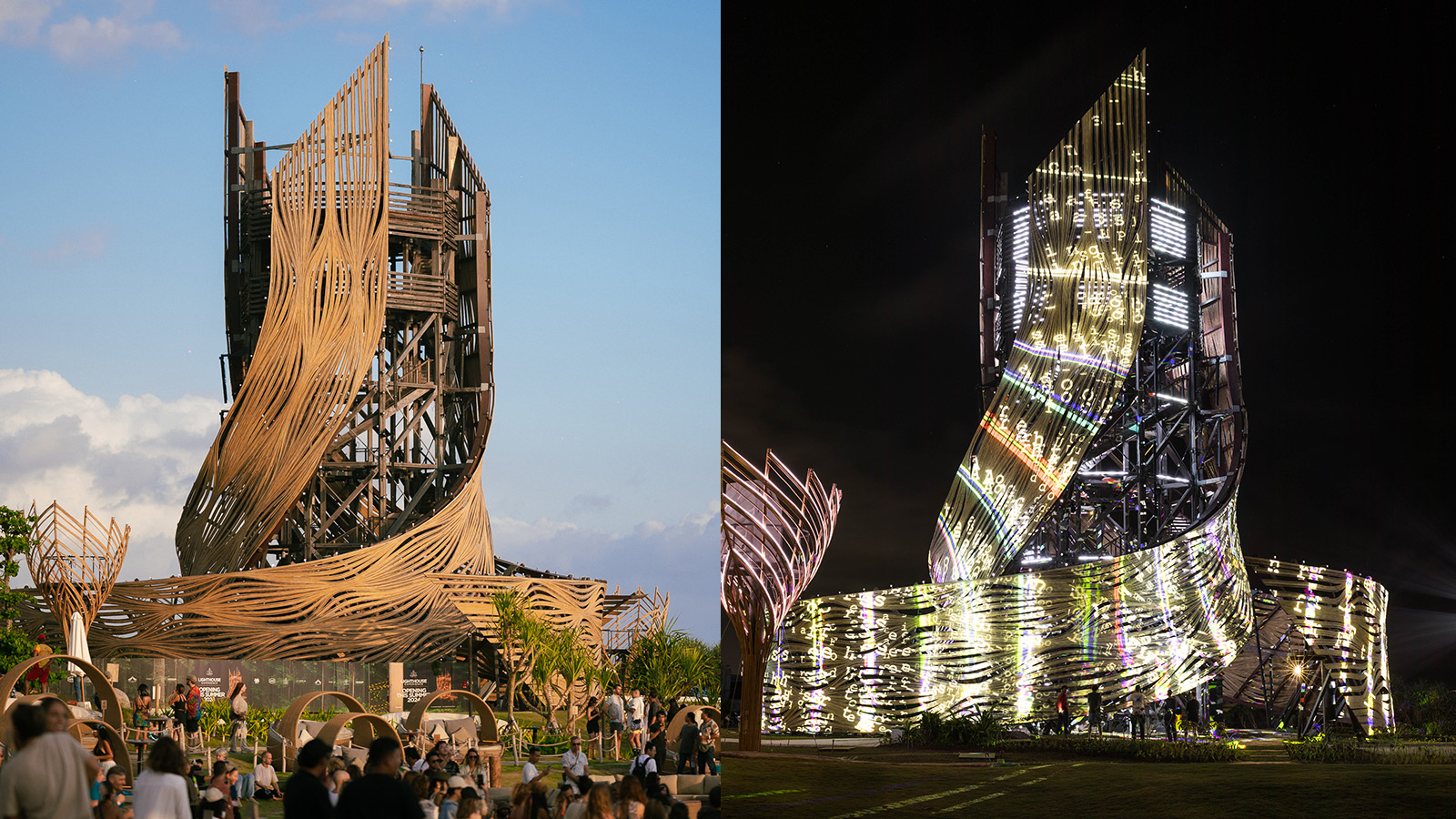 Bali welcomes Tri Hita Karana Tower, a hybrid sound and vision centrepiece
Bali welcomes Tri Hita Karana Tower, a hybrid sound and vision centrepieceTri Hita Karana Tower is launching at Bali's Nuanu City; designed by Arthur Mamou-Mani, it’s a new hybrid art-AI architectural landmark for the island
By Ellie Stathaki
-
 This Bali villa flies the flag for contemporary bamboo architecture
This Bali villa flies the flag for contemporary bamboo architectureA Bali villa fusing traditional craftsmanship with contemporary vision by design studio Ibuku and Earth Lines Architects demonstrates the versatility of bamboo
By Jens H Jensen
-
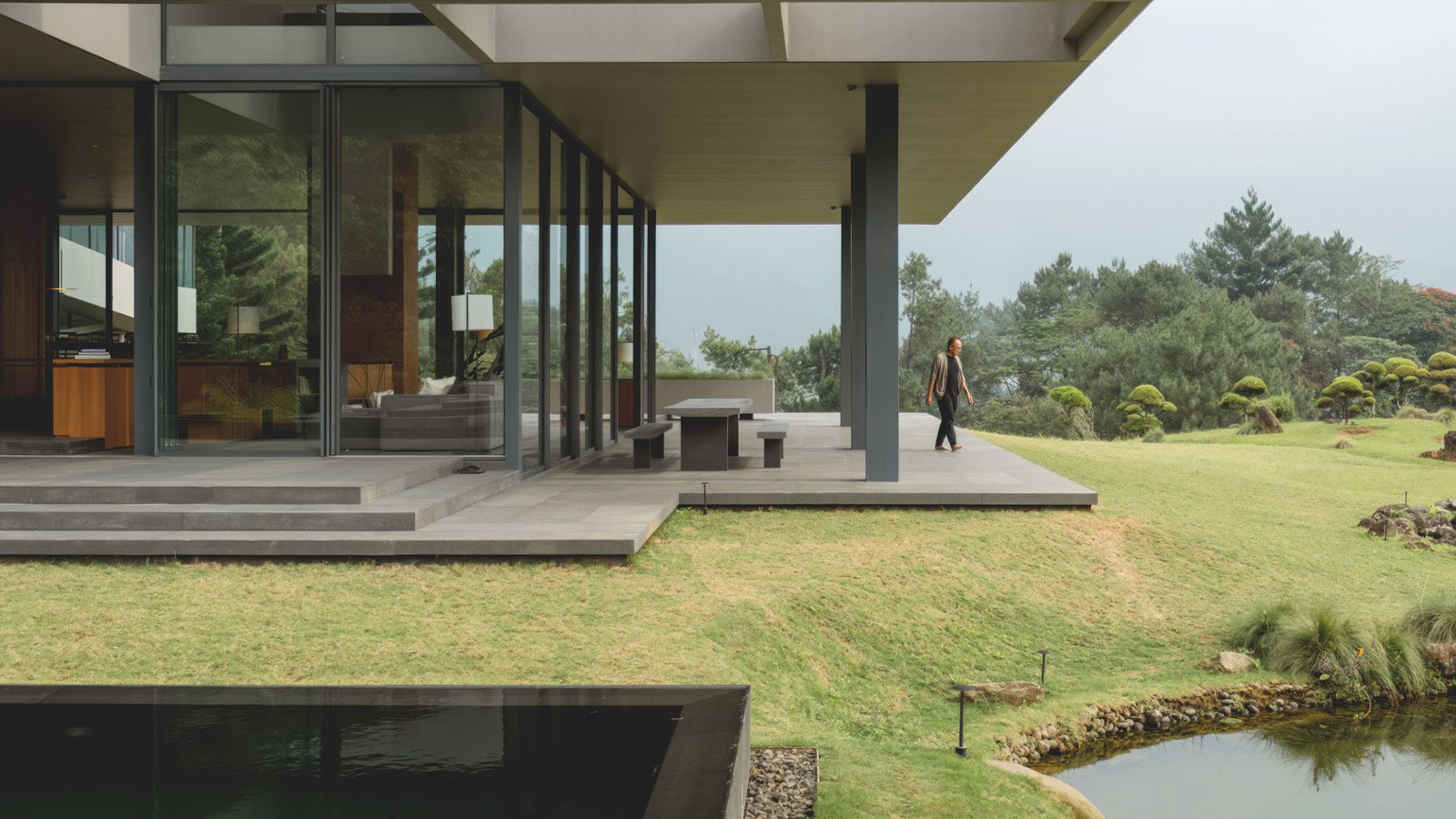 'Tropicality' explored in Indonesian architect Andra Matin’s first monograph
'Tropicality' explored in Indonesian architect Andra Matin’s first monograph'Tropicality' is a key theme in a new book on Indonesian architect Andra Matin, whose work blends landscape, architecture and living
By Harriet Thorpe
-
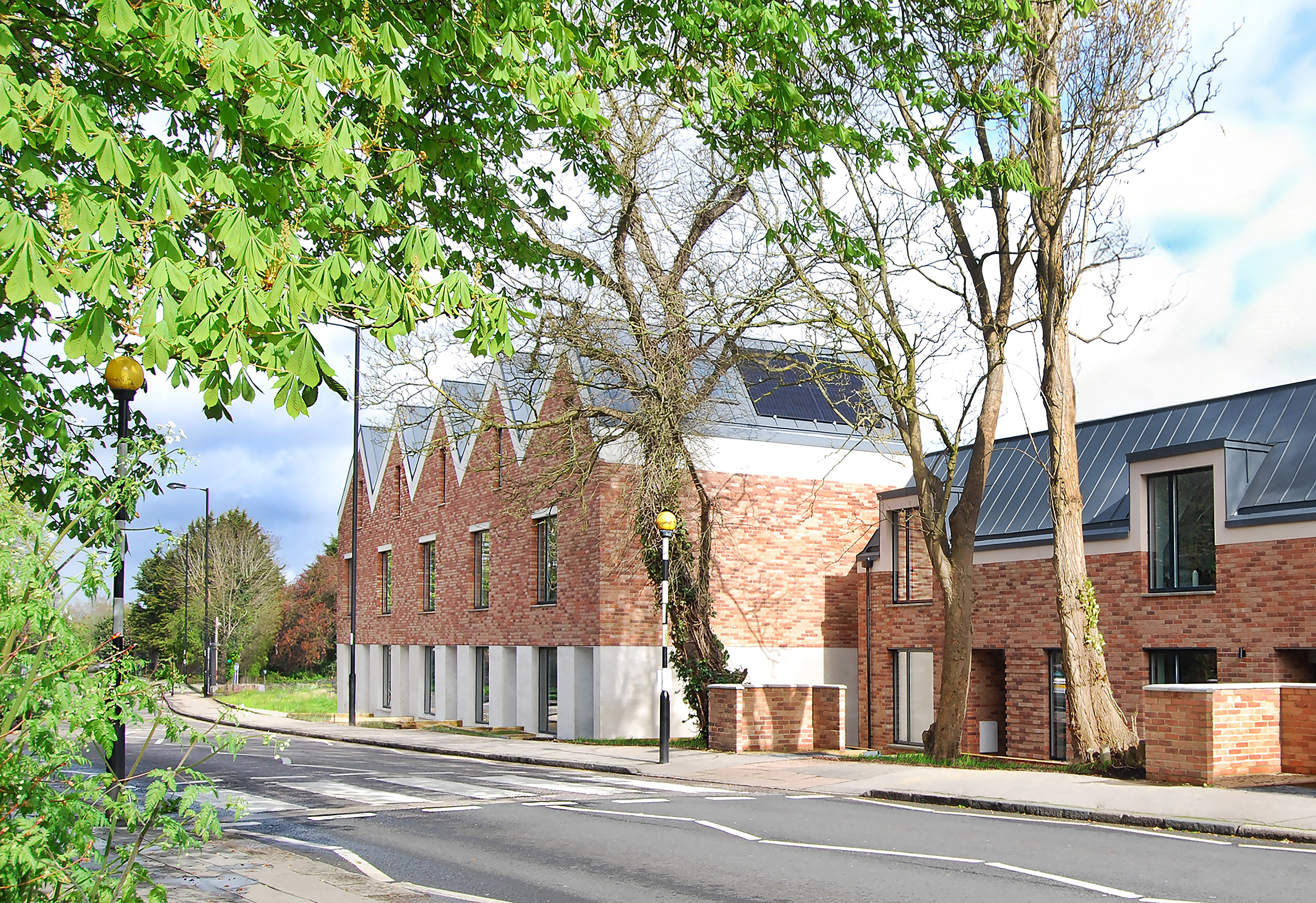 Hermitage Mews is a net-zero family of homes in London’s Crystal Palace
Hermitage Mews is a net-zero family of homes in London’s Crystal PalaceHermitage Mews by Gbolade Design Studio is a sustainable residential complex in south London's Crystal Palace, conceived to be green and contextual
By Ellie Stathaki
-
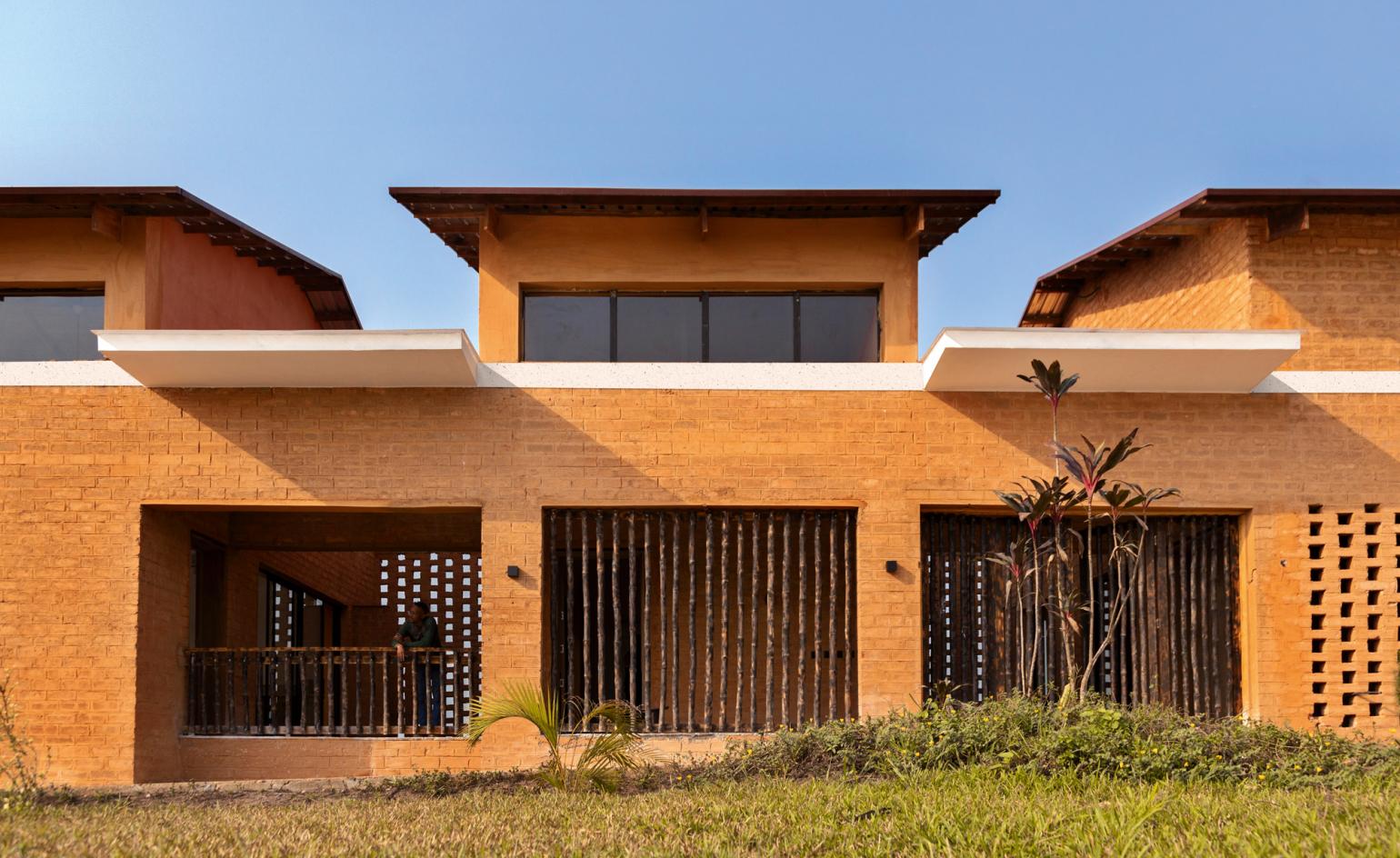 Sustainable architecture: 46 innovative and inspiring building designs
Sustainable architecture: 46 innovative and inspiring building designsThis is sustainable architecture at its best: from amazing abodes to centres of care and hard-working offices, these buildings not only look good but also do good
By Ellie Stathaki
